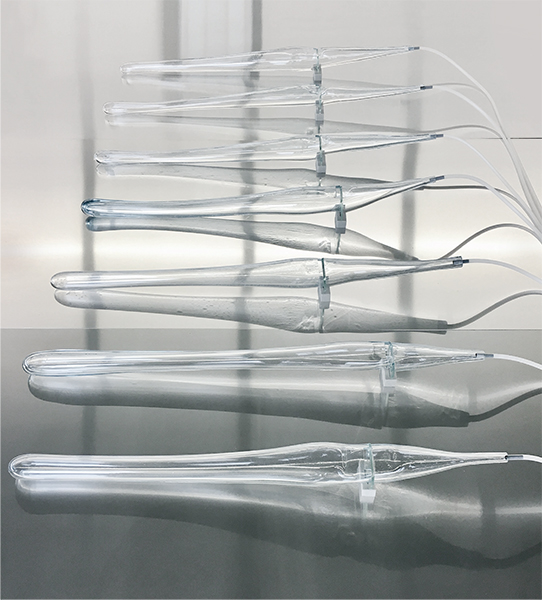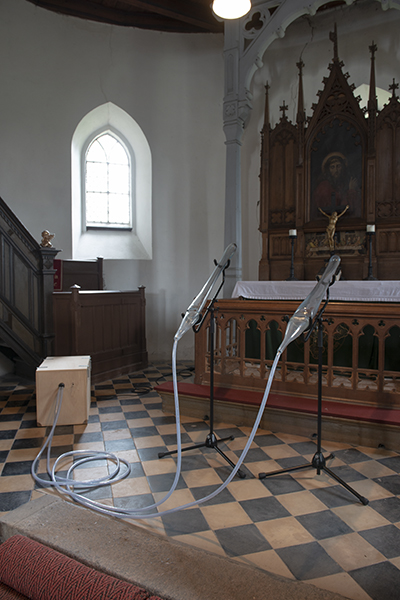



Al Wakra – that is the name of an area in the desert country of Qatar as well as the title of Katja Aufleger’s glass organ pipes. The former is the site of so called singing dunes, which produce specific sounds – a sort of roar or drone – that can sometimes be heard in the desert for miles around.
The pipes were made out of the sand of one of these walking dunes, which Aufleger brought back from a trip to Qatar. They emulate the dune’s timbre and are both works of sculpture and sound installation. The decision to manufacture the pipes out of glass was motivated not so much by design considerations and an aesthetic preference for this particular substance as rather by its material basis: glass is made out of sand. A physical transformation of the dune lets it keep chanting its “song” from the organ pipes. With a subtle difference: air and moving particles are still what produce the sound, but their migration, their self-willed movement, is frozen. Yet the latter is what generates the dull and loud noise (“song” strikes me as almost a misnomer). More precisely, the vibration of countless grains of sand set in motion generates the noise, as each individual grain is synchronized with many others, resulting in homogeneous motion and homogeneous vibration, not unlike the voices in a chorus singing in unison. Scientists have not entirely unriddled the unison of the sand, and even if one day they do, the fascination the phenomenon has exerted on humans for centuries will persist.
The dune is like a Siren, attracting researchers as well as mythmakers. The phenomenon as an inscrutable creature, a sand spirit, the partner in a pas de deux of seduction – and, potentially, a source of danger.
Annette Hans
exhibition view: UNDOCUMENTED, PS120 Berlin DE
exhibition view: SIREN (some poetics), Amant, New York US
exhibition view: SIRENS, Stampa Gallery Basel CH
exhibition view: LA/Lexow, Lexow DE